On April 9, 2025, Can Gio Urban Tourism Joint Stock Company (a member of Vingroup Corporation) sent an official dispatch to the People's Committee of Can Gio district regarding event support at the Can Gio coastal urban area project.
Accordingly, the groundbreaking ceremony of the Can Gio coastal urban area project will be held on April 19, 2025. The People's Committee of Can Gio district also sent an official dispatch to the units requesting support for the groundbreaking ceremony in terms of security and order, fire prevention and fighting, and priority support for vehicles crossing the ferry for vehicles of central and city agencies attending the groundbreaking ceremony.
Previously, a representative of Vingroup Corporation said that this enterprise aims to start construction of the Can Gio coastal urban area project before April 30, 2025.
The leader of the Ho Chi Minh City People's Committee also said that trying to start the project before April 30 will contribute to creating momentum for Ho Chi Minh City.

The Can Gio coastal urban area has been "conceived" for many years. In early 2025, the project was approved by the Ho Chi Minh City People's Committee for detailed planning at a scale of 1/500.
The Can Gio coastal urban area has a main highlight, a 108-storey symbolic tower located in the Hai Dang cape area - a mixed-use commercial, service, office and hotel building that can be observed from all locations in the urban area.
Mr. Bui Xuan Cuong - Vice Chairman of Ho Chi Minh City People's Committee signed Decision No. 340/QD-UBND approving the detailed planning project at a scale of 1/500 of Can Gio coastal tourism urban area (Can Gio district) with 4 sub-areas including: A, B, C and D-E. Accordingly, the location and boundary of Can Gio coastal tourism urban area is in Long Hoa commune and Can Thanh town, Can Gio district.
Of which, subdivision A (953.23ha), subdivision B (659.87ha), subdivision C (318.32ha), subdivision D (480.46ha) and subdivision E (458.12ha).
According to the planning of Ho Chi Minh City for the period of 2021 - 2030, with a vision to 2050, Can Gio district will become an ecological urban area, preserving the biosphere reserve, focusing on developing the marine economy, especially transit ports and free trade zones; logistics transportation, tourism, marine ecological urban areas and renewable energy.
In addition to the Can Gio coastal urban area project, Ho Chi Minh City will also call for investment in the Can Gio international transit port project, with a total investment of about 6 billion USD.
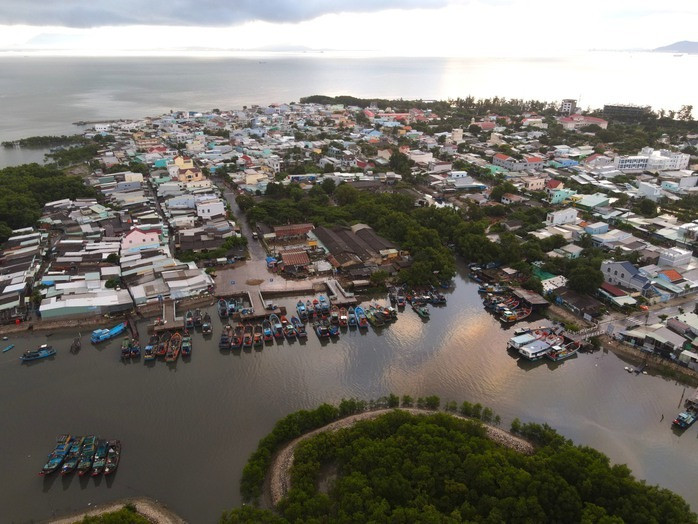
Project implementation area of Can Gio coastal urban area
Sub-area A (area 953.23ha)
Zone A is an ecological urban area combined with tourism services at the gateway to Can Gio coastal urban tourism area. Zone A is divided into 8 areas, including 4 residential units (A1, A3, A4, A6) and 4 functional areas (A2, A5, A7, A8).
The highlight of subdivision A is the combination of ecological space and resorts, golf courses, public beaches and amusement parks.
The Ho Chi Minh City People's Committee requires the design to ensure liveliness and safety, especially at night in public areas near parks and tourist areas.
.jpeg)
Perspective of subdivision A
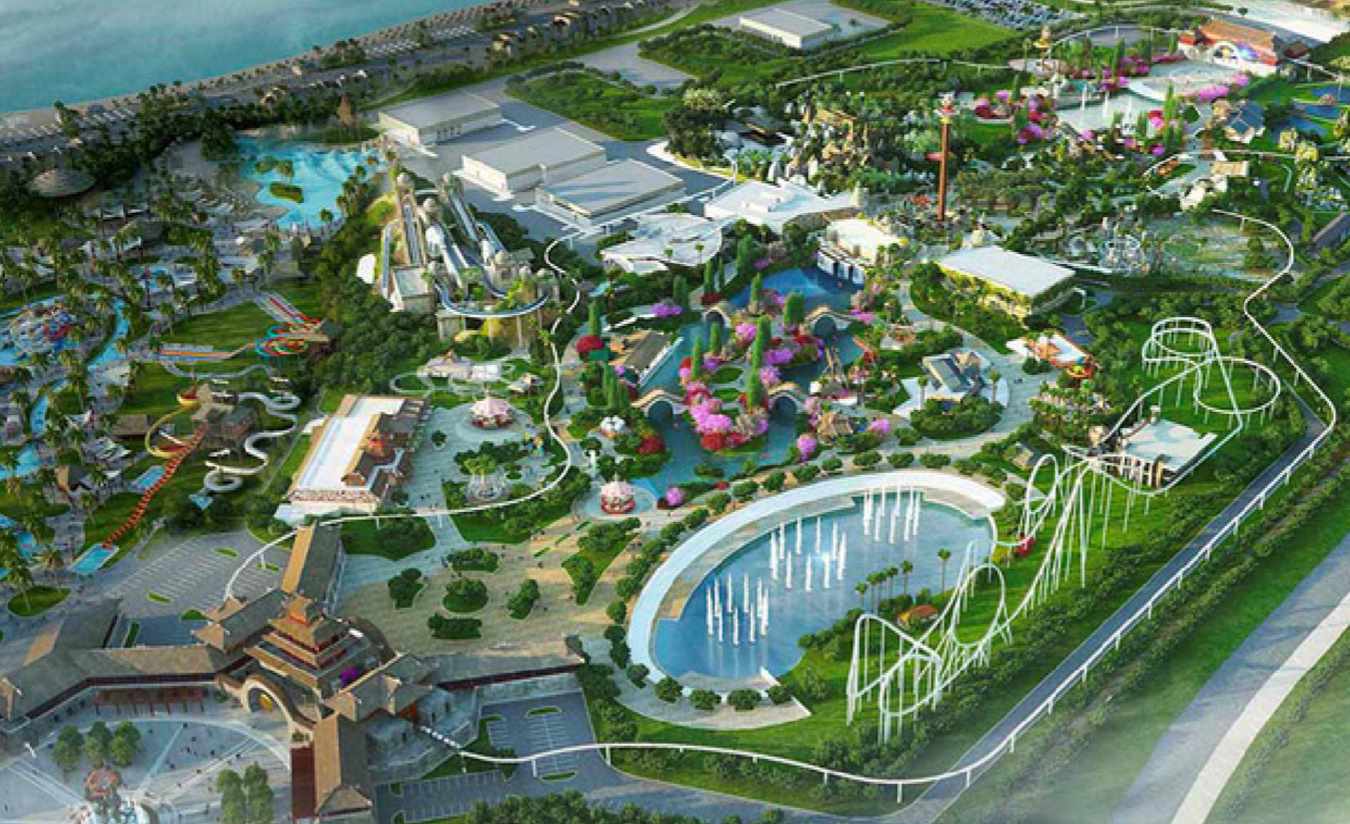
Amusement park in area A. Photo: Can Gio District

Public beach combines many amenities and landscapes in the urban area. Photo: Can Gio District
Sub-area B (659.87ha)
Sub-area B is the area for developing resort tourism and housing, combined with public service works such as healthcare, education and commercial services, administrative headquarters, offices, etc. The architectural space here will be organized according to the main landscape axes, including Can Thanh - Long Hoa Boulevard, central roundabouts and coastal walking streets, urban green areas and technical infrastructure hubs and urban technical infrastructure systems in the direction of a modern and smart urban area.
In subdivision B, it is divided into 4 residential units: B1, B2, B3, B4 with a total expected population of 75,000 people and 1 functional subdivision, which is the B5 resort area with the orientation of developing into a commercial service area, tourism services combined with public service works.
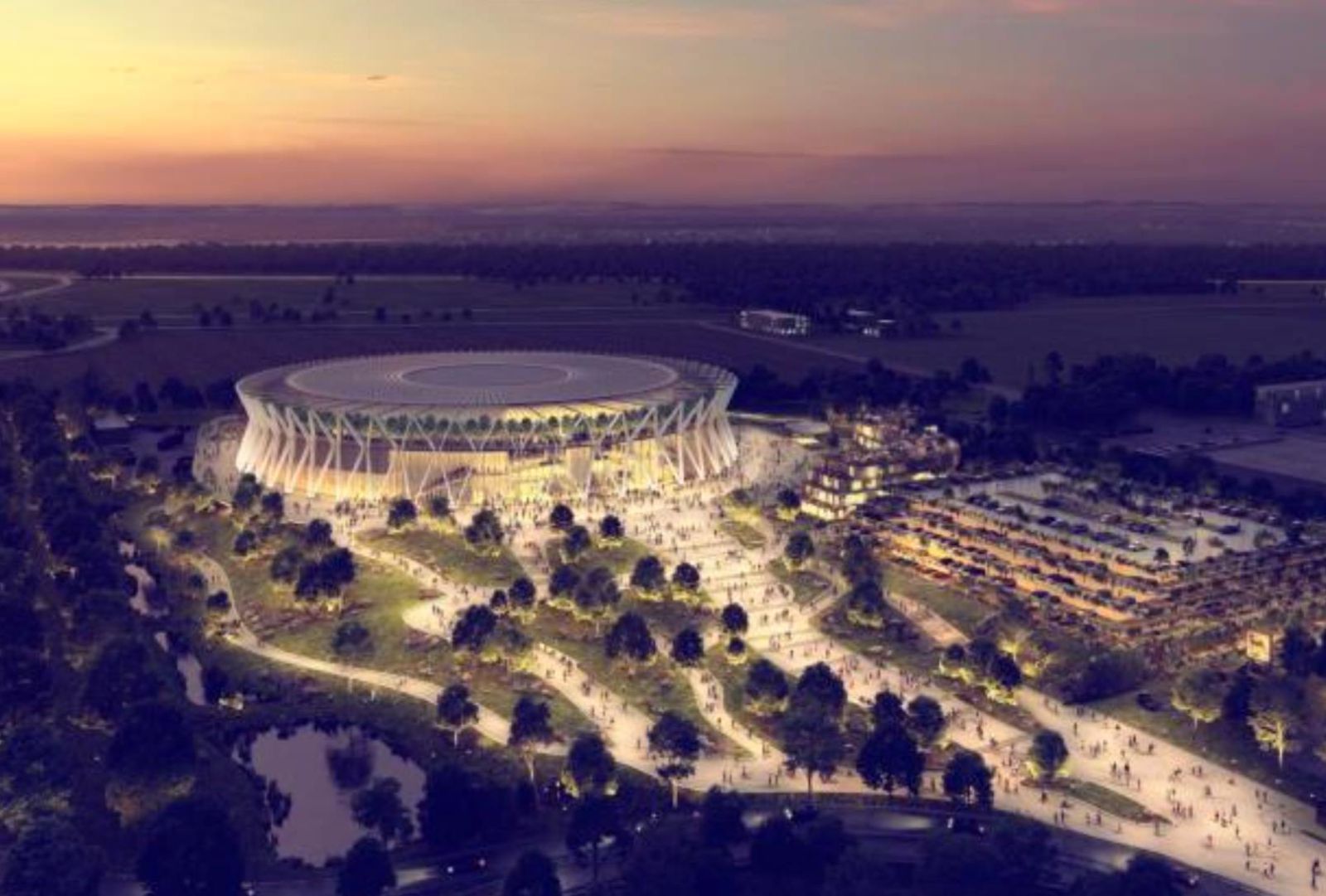
Stadium in subdivision B. Photo: Can Gio District
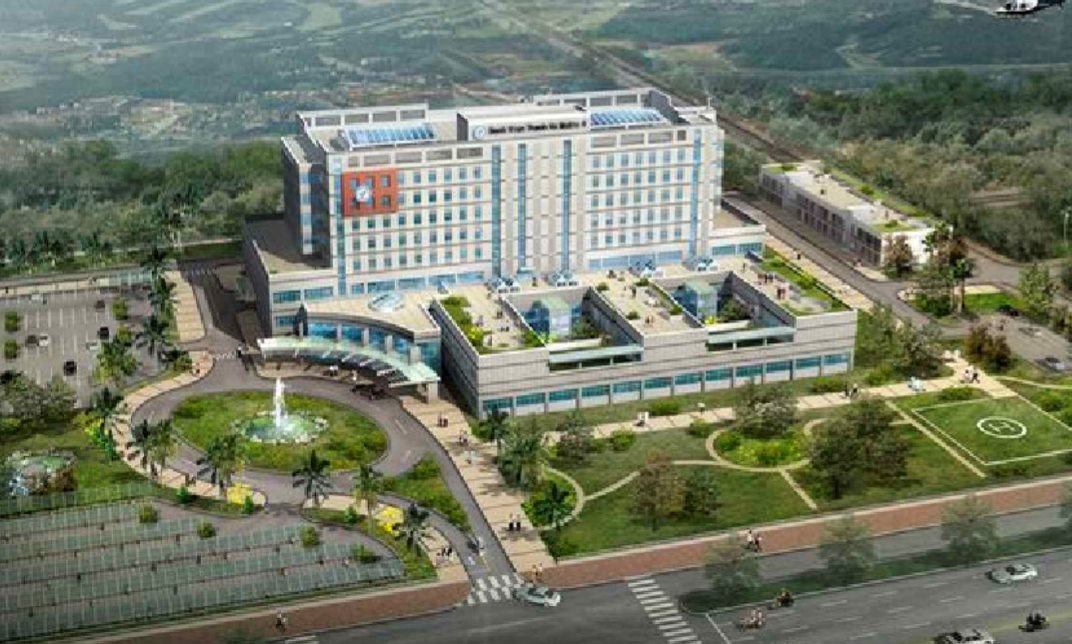
The entrance to Area B will have public facilities such as parking lots, hospitals, and schools. Photo: Can Gio District
Sub-area C (318.32ha)
Zone C is oriented to become the financial, economic, commercial, service, office and port center of the entire urban area. This area will also include a port and modern residential areas such as: townhouses, villas and high-rise buildings.
This area will have lots of green space, creating a feeling of closeness to nature, while providing modern technical infrastructure to serve residents and tourists.
Zone C is also divided into 6 residential units from C1 to C6 with a maximum total population of 41,364 people, including a mixed-use area (mixed land of 44-storey high-rise residential buildings) with a maximum population of about 8,315 people with the orientation of developing into a commercial service area, tourism services combined with a number of public service works.
Notably, Sub-area C is also home to landmark buildings such as the iconic 108-storey Tower at Hai Dang Cape, creating a highlight for the entire area - this is a mixed-use commercial, service, office, and hotel project that can overlook every location of the urban area. This is a complex of buildings with both impressive height and modern architectural design, symbolic of the entire urban area.

Perspective of the 108-storey tower at Cape Hai Dang in area C.
Sub-area D (480.46ha)
Zone D is a high-end commercial and resort development area, with modern urban areas combining commerce and services with residential areas (townhouses, villas). This area will focus on developing resorts, hotels, commercial and entertainment centers.
Zone D is divided into 4 units in D1, D3, D4, D5 and 2 functional areas including tourism service functional area D2 and functional area E1.

Perspective of area D with ecological island villas. Photo: Can Gio District
Landscape spaces will be organized along main axes and along the waterfront, creating an attractive landscape for visitors and residents.
Sub-area E (458.12ha)
Zone E is mainly an area of water, canals and trees, playing the role of air conditioning and creating ecological landscape for the entire urban area. This area is designed to protect the environment and ensure ecological sustainability.
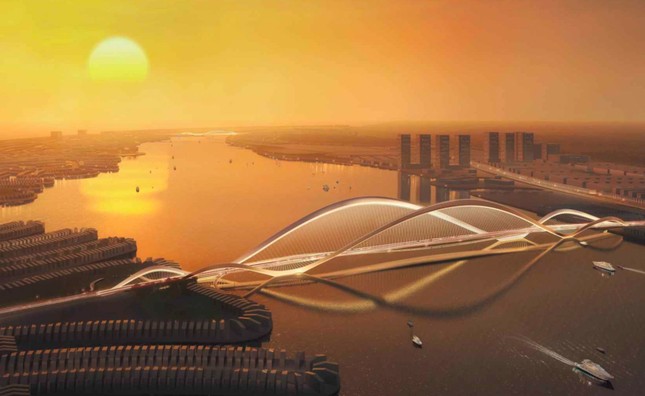
Area E with the highlight being the bridge built from the Northeast to Hai Dang Cape. Photo: Can Gio District
According to the decision to adjust the investment policy in June 2020, the project's investment scale was increased from 600 hectares to 2,870 hectares. The project will operate for 50 years, with an implementation progress of 11 years.
Can Gio Urban Tourism Joint Stock Company - a subsidiary of Vingroup Corporation (stock code: VIC) is the investor of Can Gio coastal urban area, expected to implement the project from April 2025. This complex can be completed in 2030.
The project has an estimated total investment of more than VND 282,000 billion. Of which, the total investment in the sea encroachment part (construction of embankments, leveling) is more than VND 65,609 billion, the total investment in technical infrastructure is more than VND 32,516 billion, and the total investment in architectural works is more than VND 184,706 billion.












